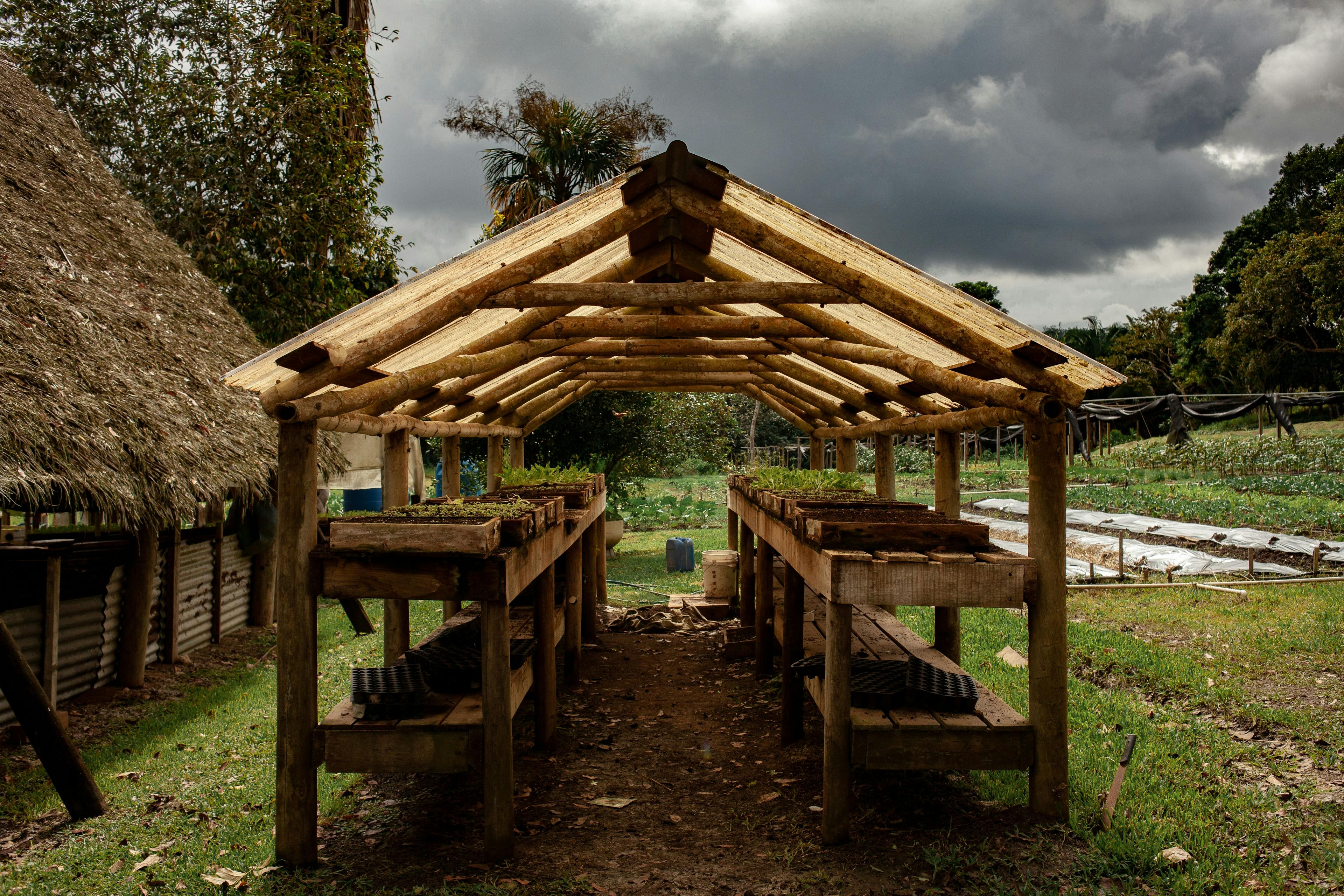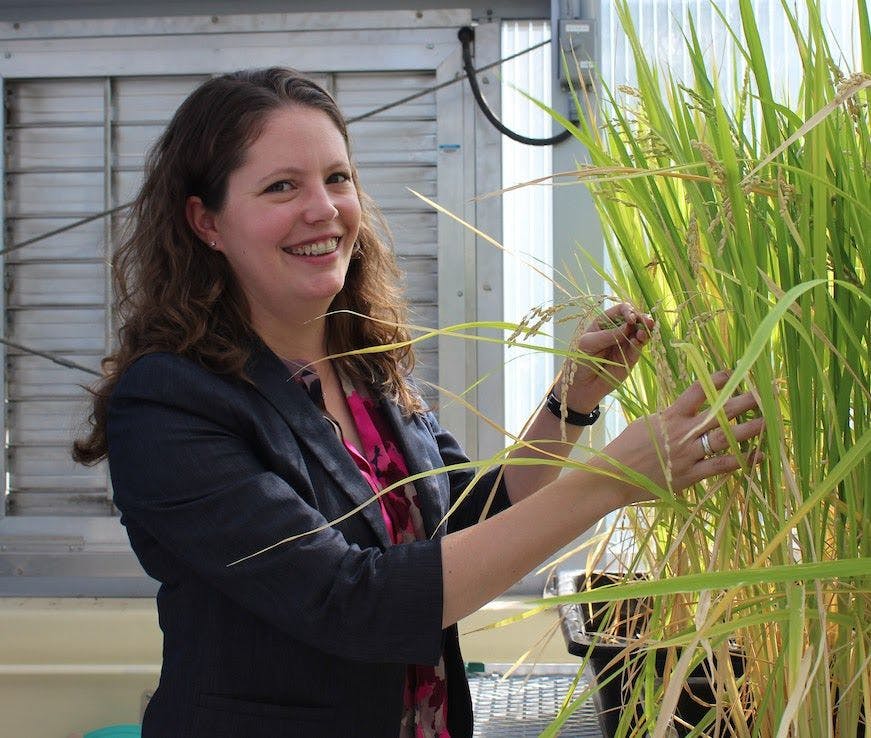In January 2019, twenty-three undergraduate students, including all authors, traveled from Eckerd College located in St. Petersburg, Florida, to Belize to participate in a three-week tropical ethnobotany course. One of our assignments while in-country was to collect data for a photo essay concerning an ethnobotanical relationship. While some student groups investigated knowledge of medicinal plants or non-domesticated foods, our task was to investigate agricultural techniques and domesticated plants. We made observations and conducted informal interviews primarily in and around two locations in Belize: San Ignacio and Blue Creek Village. The most compelling issue we encountered during our studies was the shift in land use, from traditional, biodiverse, organic milpa farming to industrialised agriculture, reliant on synthetic pesticides and fertilizers. While much has been written about this transition in Belize and, more broadly, in Central America, our brief study can contribute novel examples of existing resistance to what our participants believed to be unsustainable farming practices and support the call for utilising traditional knowledge of farming techniques to improve land use for Belize's future.
During our stay in the southern Toledo District village of Blue Creek, home to Mopan and Kekchi Maya people, Silvano, a local plant expert, healer, and farmer, condemned synthetic pesticides, claiming that they dried out the corn, slowed down crop growth, and poisoned the land (Figure 2). Current literature supports his claims; synthetic pesticides do not only affect the land on which they are used, but spread to organic farms nearby, as well as bodies of water and residential areas (Kaiser 2011). Of the numerous organic farmers we talked to, many of them believed the spike of synthetic pesticides was due to a "lazy generation" of farmers. Although this may be a biased oversimplification, monoculture is significantly easier to maintain, and synthetic pesticides have much faster results than organic applications. In addition, there is an intentional shift towards more Western agricultural methods—namely, monoculture and synthetic chemical use—in a bid to become more "modern," particularly among younger generations (Binford 2007; Carey 2009).

Within the Maya communities we visited, we discovered a movement to return to small-scale, sustainable organic milpa farming. These practices benefit not only farmers and their communities, but also the land that they subsist on (Grandia 2009). The milpa method, also known as "swidden farming," relies on occasional use of fire to clear and fertilise the land (Figure 1). Combined with crop rotation and polyculture, milpa farming is relatively sustainable, especially on a smaller scale (Ford and Nigh 2009). As sustainable tourism continues to become more popular in Belize (Lindberg, Enriquez, and Sproule 1996; Palacio 1997), this kind of farming may be attractive to visitors, thus beneficial to the Belizean economy. In addition, a lack of synthetic compounds on farmed produce is beneficial to the health of those who eat it (Margni et al. 2002). We found that these advantages are more often articulated by the older generations in Maya communities and by those with specialised plant knowledge, such as shamans and other healers.
When synthetic pesticides are not used, farmers must turn to other methods to protect their crops from insects. The exact methods often vary between farmers, but there are some consistencies. For instance, many of the farmers we interviewed sprayed ground or liquefied hot peppers on their crops as a way to discourage ant predation. This is one of the techniques preferred by William (pseudonym), a farmer in the San Ignacio area of Belize. William also mentioned the use of baby powder to deter army ants. His favorite ant control method involves a mixture of orange peel and vinegar sprayed liberally over his crops. Studies have shown the efficacy of citrus oil as a repellent for beetles (Zarubova et al. 2015), although the effects on ants are not yet supported by scientific literature. In addition, strongly scented flowers and trees—such as allspice and hibiscus—can be seen planted near crops as an insect deterrent.

Other natural pest deterrent techniques often rely on preventing the insects from accessing crops. Some farmers, hoping to block ants from their crops, particularly seedlings and other vulnerable plants, utilise greenhouses. At the Chaa Creek Maya Organic Farm, cucumber seedlings are germinated in greenhouses to protect against pests (Figure 4). They are then replanted and wrapped around wires, which encourage them to grow upwards, away from worms and grubs in the soil. Another method involves the clearing of nearby weeds with a machete, intended to impede ants by creating a barren earth moat around the crops.

The most intriguing organic pesticide technique we discovered was described by Isidoro, a plant expert and farmer, in Blue Creek Village. Isidoro gathers certain types of fungus from the forest, mixes them with topsoil from a nearby cave, waits for a period of time, adds water, then sprays the mixture over his gardens and crops. According to him, this enriches the soil and keeps away pests. He asserted that the fungus communicated with the ants, telling them, "these are my plants now." In support of Isidoro's claims, there is evidence that types of parasitic fungi work as effective pest deterrents (Pelizza et al. 2018).

Deforestation, climate change, and development due to tourism are threatening the livelihoods of subsistence farmers in Belize (Cherrington et al. 2010; Chomitz and Gray 1996). Additionally, the intergenerational knowledge of traditional farming methods is being lost as younger generations are drawn to modernisation or migrate to urban areas (Binford 2007; Saqui 2012; Wilk 1997). Currently, Maya organic farms are mainly small-scale and personal farms, but they act as pockets of resistance to current agricultural trends in Belize, as repositories of traditional knowledge and spaces of experimentation with sustainable farming techniques. Through education and awareness, organic farming may become a more widespread tool, increasing the health of Belizean residents and soils.

With modern techniques quickly consuming traditional ways of farming, there is, fortunately, new institutional support for the preservation of this cultural knowledge (Morales and Perfecto 2000; Saqui 2012). One such source of support is the Toledo Institute for Development and Environment, also known as TIDE. This organization works to encourage sustainable farming and promote traditional agricultural knowledge. Their focus is education, providing Belizeans with new information about sustainable farming and elevating the importance of local and traditional knowledge. Similarly, a mandate created by the Belizean government requires schools to provide garden and agricultural education as a part of their curriculum. This is intended to foster knowledge and interest in farming among Belizean youth. With programs like this in place, knowledge of Maya organic farming methods is becoming more widespread, highlighting the need for the conservation of knowledge about sustainable farming techniques that can be taught to and implemented by future generations of Belizean farmers.
References
Binford, E. M. 2007. Dynamics of Land Use among Maya of Southern Belize. MA Thesis, University of Florida, Gainesville. Carey Jr., D. 2009. Guatemala's Green Revolution: Synthetic Fertilizer, Public Health, and Economic Autonomy in the Mayan Highland. Agricultural History 83(3):283–322. Cherrington, E. A., E. Ek, P. Cho, B. F. Howell, B. E. Hernandez, E. R. Anderson, A. I. Flores, B. C. Garcia, E. Sempris, and D. E. Irwin. 2010. Forest Cover and Deforestation in Belize: 1980–2010. Online. Chomitz, K. M. and Gray, D. A. 1996. Roads, land use, and deforestation: a spatial model applied to Belize. The World Bank Economic Review 10(3):487–512. Ford, A. and Nigh, R. 2009. Origins of the Maya Forest Garden: Maya Resource Management. Journal of Ethnobiology 29(2):213–237. Grandia, L. 2009. Milpa Matters: The Maya Communities of Toledo v. the Government of Belize. In: B. R. Johnston and S. Slyomovics (eds.) Waging War, Making Peace: Reparations and Human Rights. Walnut Creek, CA: Left Coast Press. Pp.153–182. Kaiser, K. 2011. Preliminary Study of Pesticide Drift into the Maya Mountain Protected Areas of Belize. Bulletin of Environmental Contamination and Toxicology 86(1):56–59. Margni, M., Rossier, D., Crettaz, P., and Jolliet, ). 2002. Life Cycle Impact Assessment of Pesticides on Human Health and Ecosystems. Agriculture, Ecosystems, and Environment 93(1–3):379–392. Morales, H. and Perfecto, I. 2000. Traditional Knowledge and Pest Management in the Guatemalan Highlands. Agriculture and Human Values 17(1):49–63. Palacio, V. 1997. Identifying Ecotourists in Belize through Benefit Segmentation: A Preliminary Analysis. Journal of Sustainable Tourism 5(3):234–243. Pelizza, S.A., S. Schalamuk, M. R. Simón, S. A. Stenglein, S. G. Pacheco-Marino, and A. C. Scorsetti 2018. Compatibility of Chemical Insecticides and Entomopathogenic Fungi for Control of Soybean Defoliating Pest, Rachiplusia nu. Revista Argentina de Microbiolgía 50(2):189–201. Saqui, P. 2012. Mopan Maya Science: Traditional Ecological Knowledge and its Transmission among Mopan Maya Milpa Communities of Belize. PhD Dissertation, University of Florida, Gainesville. Wilk, R. R. 1997. Household Ecology: Economic Change and Domestic Life among the Kekchi Maya in Belize. DeKalb, IL: Northern Illinois University Press. Zárubová, L., L. Kourimska, M. Zouhar, P. Novy, O. Douda, and J. Skuhrovec 2015. Botanical Pesticides and their Human Health Safety on the Example of Citrus sinensis Essential Oil and Oulema melanopus under Laboratory Conditions. Acta Agriculturae Scandinavica, Section B - Soil and Plant Science 65(1):89–93.






